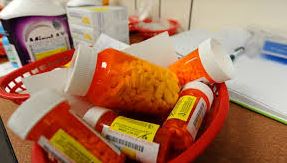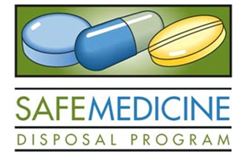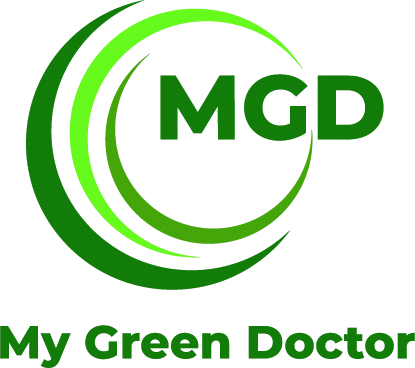Introduction
Our concerns about chemicals and pharmaceuticals in the doctor’s office are complex. There are so many chemicals in our offices, some of which might be found in any office and others of which are special to the healthcare world. Example of common office chemicals would be photocopier toner, cleaning supplies, and insect sprays. Chemicals unique to a doctor’s office include sterilizing agents and pharmaceuticals.
For each chemical, there are many questions we might ask. Is this chemical harmful to those of us in the office? Is the chemical manufactured and packaged using methods that are environmentally sound? Is the chemical stored safely? Is someone in the office responsible for managing it? Is the chemical outdated and perhaps now dangerous? Does this chemical persist in our environment or does it quickly degrade harmlessly?
Do we really need this chemical in the office? Is there a healthier or ‘greener’ alternative? If we do need it, can we use less of it and save money? Is the packaging recyclable or reusable?
Do we know how to discard chemicals responsibly? The toilet is not the right answer because chemicals and medicines flushed away end up in our rivers, lakes, and drinking water.
We worry about keeping clean in the medical office. But sometimes we overdo “clean” by using too many chemicals or too toxic chemicals in the office and home. Bleach is often the first chemical we seek for a bad spill, but bleach is quite toxic, is certainly overused in hospitals and offices, and many experts say that bleach is the reason why nurses worldwide are the most likely professionals to develop adult-onset asthma. For a sensible guide to cleaning, see the My Green Doctor blog, https://mygreendoctor.es/green-cleaning-keeps-toxins-out-heres-how/
The internet has abundant resources from the chemical industry, hospital organizations (way ahead of doctor offices on this subject), and government. We will guide you through them in this workbook. Avoiding unnecessary chemical exposures in the office and at home may be another way to save money.
If you have not yet done so, please register now with the Green Doctor Office Program before you proceed further.
Adopt policy for safe medication disposal by the office, your families and patients. Prepare a one-page handout for your office and patients. Every time your office recommends a new medication to patients, remind them of safely discarding their old pharmaceuticals. Print our free posters & buy simple picture frames to inform your colleagues and patients:
Almost all medicines, vitamins and herbal medicines can be thrown into your household trash. These include prescription and over-the-counter (OTC) drugs in pills, liquids, drops, patches, creams, and inhalers.
If you are concerned that the medicines could be misused by others, remove the drugs from their original containers and mix them with something undesirable, such as used coffee grounds, dirt, or cat litter. Put the mixture in something you can close — such as a plastic bag, empty can, or other container to prevent the drugs from leaking or spilling out. Throw the container in the garbage. Scratch out personal information on the empty medicine packaging to protect privacy.
Some medicines, such as adhesive medicine patches, liquid medicines, and inhalers, come with instructions for their disposal. Some inhalers can be dangerous if the container is punctured. You can ask your pharmacist or return these to the pharmacist, but never discard medicines in the sink or toilet as these can contaminate public water supplies.
Unused medicines also can be returned to most pharmacies for disposal. Speak with your pharmacist. If you are not sure what is advised in your community, contact the government to learn the disposal rules for medications and especially for controlled substances. You may find this information on line from your government, your trash collector, or your hazardous waste collection center.
Adopt an office policy to use only “green chemicals” endorsed by Green Seal , EcoLogo, Environmental Choice , or a similar organization. These are products that are safer for you, safer for the workers who made them, and safer for the environment. Products to identify in your office include general cleaners, toilet bowl cleaners, carpet cleaners, glass cleaners, floor strippers and waxes. Never use bleach, a common cause of lung injury to health professionals. The person who sells and delivers your cleaning products may know about safe chemicals and be pleased to help.
Consider sharing with your colleagues and patients our “Green Cleaning” blog: https://mygreendoctor.es/green-cleaning-keeps-toxins-out-heres-how/ . Tell your patients that you choose safer, “greener” chemicals!
Adopt a policy to use only Green hand cleansers in the public areas such as restrooms. Avoid “anti-bacterial” products as these generally are not necessary, are expensive, and can harm the environment. Never use soaps containing triclosan, a chemical that is particularly hazardous. Consider sharing with your colleagues and patients our “Cheaper & Greener” blog: https://mygreendoctor.es/safe-soap-cheaper-greener-by-avoiding-triclosan-2/ .
Display signs stating that you use only environmentally-certified cleaning products for the safety of your patients and of the environment.Prepare an informational handout on green cleaning for patients and staff.
Adopt a policy to allow only safer chemicals when redecorating, remodeling and constructing. Wall coverings, carpets & furniture are often made with toxic patient, solvents and adhesive. When these evaporate in the office – called “off gases” – they can harm office workers and patients. A common example is formaldehyde, which can cause headache and even cancer. Be sure all discarded office contents and chemicals are recycled carefully. Work with your building manager, architects and designers.
Adopt an “Integrated Pest Management” program in order to save money and minimize the use of toxic chemicals in the doctor office. Install insect “bait stations” under desks and cabinets rather than spraying chemicals. Review pest management contracts to avoid unnecessary preventative chemical applications. Inventory annually your landscape pesticide use and adopt a best-practice standard with your landscape pest management vendor. Print for your office copies of our free “Healthy Gardening” brochure: https://mygreendoctor.es/resources/waiting-room-brochures/ .
Adopt a policy for how to safely clean up chemical spills that may occur in the office. It is important to plan this in advance so that neither the occupants of your office, your cleaning staff, or the environment are injured. For hazardous waste spills such as blood, adopt a “best practice” national standard to minimize toxic chemical exposure to patients and office workers. A body fluid spill cleanup policy is required by OSHA.
Adopt a policy to eliminate all mercury from your office. Mercury is a metal used in liquid form in many medical devices, such as sphygmomanometers, thermometers, and thermostats. Mercury evaporates at room temperature to become a highly toxic gas that causes nerve damage, kidney disease and harm to unborn children. Take an inventory of your mercury containing devices. Plan a timetable to rid the office and your homes of mercury-containing devices. Fluorescent lightbulbs contains mercury: always discard these safely. See our “Workbook 1: Energy Efficiency” for more information on bulbs.
Tips for Success
Your Improvement Plan consists of the Action Steps that you choose to adopt for the office.
For each action step:
- Record the conditions in your office before you start taking action. For example, do you have complaints about conditions in the office (smells, headache, and nausea); do you have complaints about pests such as ants, cockroaches, or other insects?
- Establish specific, measurable, date-certain targets for what you want to accomplish such as, ìWe will purchase only green-certified cleaning products by June 1î, or ìWe will always dispose of pharmaceuticals properly by January 1.î
- Agree on a leader for each Action Step.
- Agree on the responsibilities of each person in the office.
- If needed, obtain agreement or approval from the office manager or chief executive.
- Communicate with your office colleagues. Listen for ideas and try to elicit helpful criticisms.
- Educate your patients, families & community. Which ideas could be shared with your own families or with your patients? Part of the Green Team’s Improvement Plan must include an education plan. Your waiting room can become a site for education.
- Reassess the Plan after a reasonable period.
Background Information
- Chemicals from construction and decorating materials: Materials used in the construction or decoration of an office may release chemicals called off-gasses that can be harmful or unpleasant for many years. These construction items include sheetrock, paint, carpets, carpet adhesives, upholstery, furniture finishes, and electronic equipment.
- Low-level exposure to paint fumes may burn the eyes, nose, throat, and skin; they may cause headaches, dizziness, or nausea. These symptoms are generally mild. High-level exposure to some paint components, even for a short period of time, can cause severe and lasting impacts such as kidney, liver, or respiratory problems. Some oil-based paints contain formaldehyde and benzene which are carcinogenic, while others contain heavy metals and phthalates that are human and ecosystem toxins.
- Cleaning Products: Many cleaning products are irritating to patients. Some involve hazardous processes in their manufacture, or leave long-term sequelae with their disposal. The Centers for Disease Control and Prevention has stated that it is not helpful to try to disinfect our offices or all of the surfaces that come in contact with patients. We often waste time and money with excessive cleaning, and may even inflict harm. A comprehensive guide to this topic is provided by Hospitals for a Healthy Environment: here.
- Pest Control and Pesticides: Hospitals are way ahead of doctor offices in the area of pest control. They have to be since JCAHO insists on it. The mantra in this area is called, “Integrated Pest Management”. IPM uses pesticide and non-pesticide techniques. The goal is to minimize the cost and risk of chemical use. Therefore, regularly scheduled pesticide applications and “protective barrier” applications are NOT part of IPM; indeed scheduled pesticide contracts can lead to insects that are resistant to pesticides.
- Chemicals Related to Patient Care: The chemicals most likely to contact patients are those which must be the safest and cleanest. Chemicals of concern include cleaning products and mercury. In some cases, specific potentially toxic chemicals must be used such as for some equipment sterilization processes. When this is the case, the doctor office must monitor the proper education of its employees and maintain strict safety standards.
- Mercury, found in many older medical devices and thermostats, is a potent neurotoxin. OSHA’s requirements for cleaning up a mercury spill are very strict broken thermometer can cost $5000 to $200,000 to clean up. Every doctor office should assess for mercury-containing devices and replace any of these if possible. Mercury is not avoidable in fluorescent light bulbs and some batteries. Proper disposal is essential for such mercury-containing products. Every community in the US has drop-off sites for disposing mercury-containing devices and bulbs. Find a comprehensive guide: here.
- Pharmaceuticals: Flushing expired medicines down the toilet creates severe problems for the environment. Pharmaceuticals, including antibiotics, can be found in the drinking water supplies of at least 41 million Americans. A campaign to inform Americans was launched in 2008 called “SMARXT. DISPOSAL” with the web link provided here.
- Do not flush unused medications or pour them down a sink or drain. Consumers were once advised to flush their expired or unused medications; however, recent studies report that this harms the environment. While the rule of thumb is not to flush, the Food and Drug Administration (FDA) has determined that certain medications should be flushed due to their abuse potential. Doctor offices should encourage their patients to read the instructions on their medication labels and to talk to their pharmacist.
- Most unused medication should be disposed in the household trash. It is best to destroy medicines before discarding them. Care must be taken to protect children and pets from potentially negative effects. To do this, pour liquid medications into a sealable plastic bag , add kitty litter, sawdust, or coffee grounds to make the medicine less appealing, and seal the plastic bag before putting it in the trash.
- If a medication is a solid (pill, liquid capsule, etc.), crush it or add water to dissolve it before putting it in the household trash.
- Remove and destroy identifying personal patient information from discarded medication containers.
- Check for approved state and local Collection Programs. In certain states, but not in Florida, you may be able to take your unused medications to a neighborhood community pharmacy.
- Always follow your state’s laws and be particularly aware of those laws concerning drugs that may be abused, such as narcotics. Generally the law requires that these be returned to a pharmacist for disposal.






